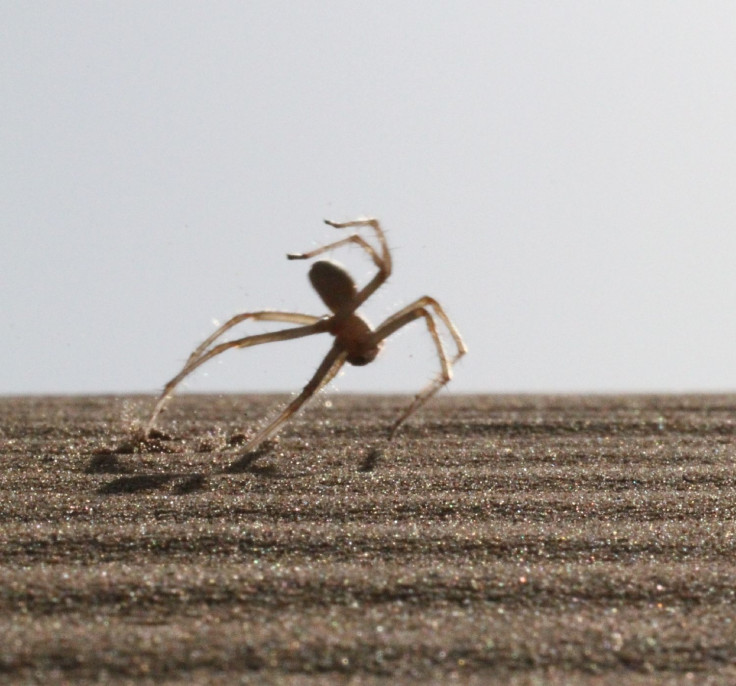New Species Of Cartwheeling Spider Inspires Miniature Robot For Martian Surface Travel [VIDEO]

A species of spider recently discovered in the Sahara desert is quite the seasoned gymnast, and its moves have inspired an advanced breed of miniature robots.
To avoid predators, the Moroccan flic-flac spider performs a series of cartwheels that can double its speed to escape danger. Researchers from the Senckenberg Research Institute in Frankfurt, Germany, describe the newly identified acrobatic spider in a study published this week in the journal Zootaxa.
According to their findings, Cebrennus rechenbergi, the species' scientific name, is the only known spider that can move by means of flic-flac jumps (the term for cartwheels favored in scientific literature).
To perform the move, Cebrennus rechenbergi gets a running start, throws its front legs out in front of itself and then flips its body into the air, bringing its feet to touch the ground ahead of it. All its performance is missing is a final "Ta da!"
The trick allows the flic-flac spider to increase its speed from 3.3 feet per second to 6.6 feet per second -- a deceptive maneuver that, although reliable, uses a lot of the spider’s energy. Researchers say it’s really meant as a last-ditch effort.
“It is a costly move,” Peter Jäger, a taxonomist at the institute who first identified the spider, told the New York Times. “If it performs this five to 10 times within one day, then it dies.”
There are just a handful of species around the world that use flic-flacking as a defense mechanism in nature. Scientific American notes that cartwheeling animals include the larvae of the southeastern beach tiger beetle, the American mantis shrimp and several types of moth caterpillars.
There’s also the flic-flac spider’s close cousin, the golden wheel spider, a small arachnid native to the steep sand dunes of the Namib Desert in southern Africa. To avoid being taken down by its biggest enemy, a parasitic wasp, the golden wheel spider rolls up into a ball and hurls itself down the side of a sand dune.
Ingo Rechenberg, a bionics expert at the Technical University of Berlin, discovered the flic-flac spider in 2009 while doing fieldwork in the Moroccan Sahara. Rechenberg presented the spider to Jäger, who honored Rechenberg by naming the new species after him.
According to the Senckenberg Research Institute, Rechenberg studies the behavior of animals to help him develop new robotic models, a field of research called biomimetics. After observing the flic-flac spider in action, Rechenberg developed an idea for a robot that could easily travel over loose sand.
“I do my work in the desert where there is not much energy available,” Rechenberg told the New York Times. “That’s the reason I have gone every year for more than 30 years -- to find out what the animals do to save energy.”
From his work with the flic-flac spider, Rechenberg designed a 10-inch-long spider robot that moves just like the real thing. The robot is called the Tabbot and gets its name from the word "Tabacha,” a term for spider in the Berber language.
“This robot may be employed in agriculture, on the ocean floor or even on Mars,” Rechenberg said in a statement.
Watch two videos of the flic-flac spider and its robot protégé in action, courtesy of YouTube:
© Copyright IBTimes 2024. All rights reserved.












